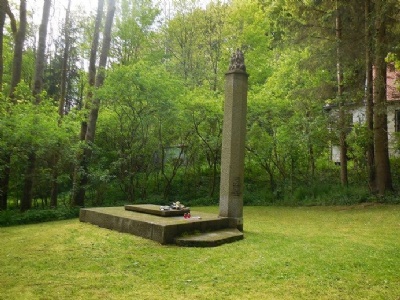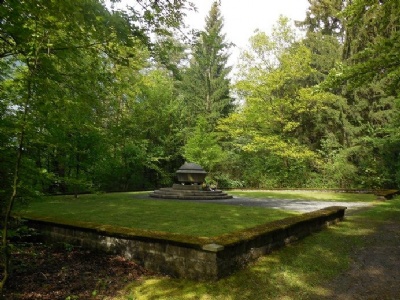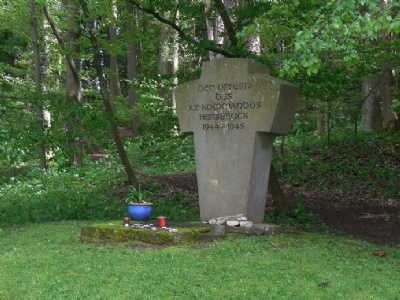Hersbruck
In mid-May 1944, a satellite camp to Flossenburg was set up in Happurg, twenty kilometres east of Nuremberg. The first 150 prisoners came from Flossenburg and initially they were locked up in a barn, but soon the number of prisoners increased. The prioner’s main purpose was to build a tunnel complex (called Doggerstollen) in a nearby mountain where aircraft engines were to be manufactured. A new prison camp was established in Hersbruck, a few kilometres north of Happurg, in August same year, another camp was set up in the village of Förrenbach. In December 1944, the total number of prisoners in these three camps were around 2000. Prisoners were forced to slave labor in extreme conditions. Lack of food, medicines and maltreatment by the guards led to a significally number of prisoners died. In order to dispose the bodies, the SS established around the turn of the year 1944/45 a crematorium in the vicinity of Förenbach. In addition to the crematorium, SS cremated bodies in two forest areas (Hubmersberg and Schupf). In early April 1945, the SS began evacuating the camp and about 3,000 prisoners were forced out on Death marches south. In mid-April, American troops arrived at Hersbruck and liberated the camp. A total of about 9,000 prisoners (the majority of Jews) from 21 different nationalities went through the camp, and around 4,000 died during the 11 months the camp existed.
Current status: Demolished with monument (2014).
Address: Am Rosengarten 14, 91217 Hersbruck.
Get there: Car.
Follow up in books: Kogon, Eugen: The Theory and Practice of Hell: The German Concentration Camps and the System Behind Them (2006).




The former camp area is now a residential area and nothing remains of the camp. In a park there is a memorial dedicated to the victims.